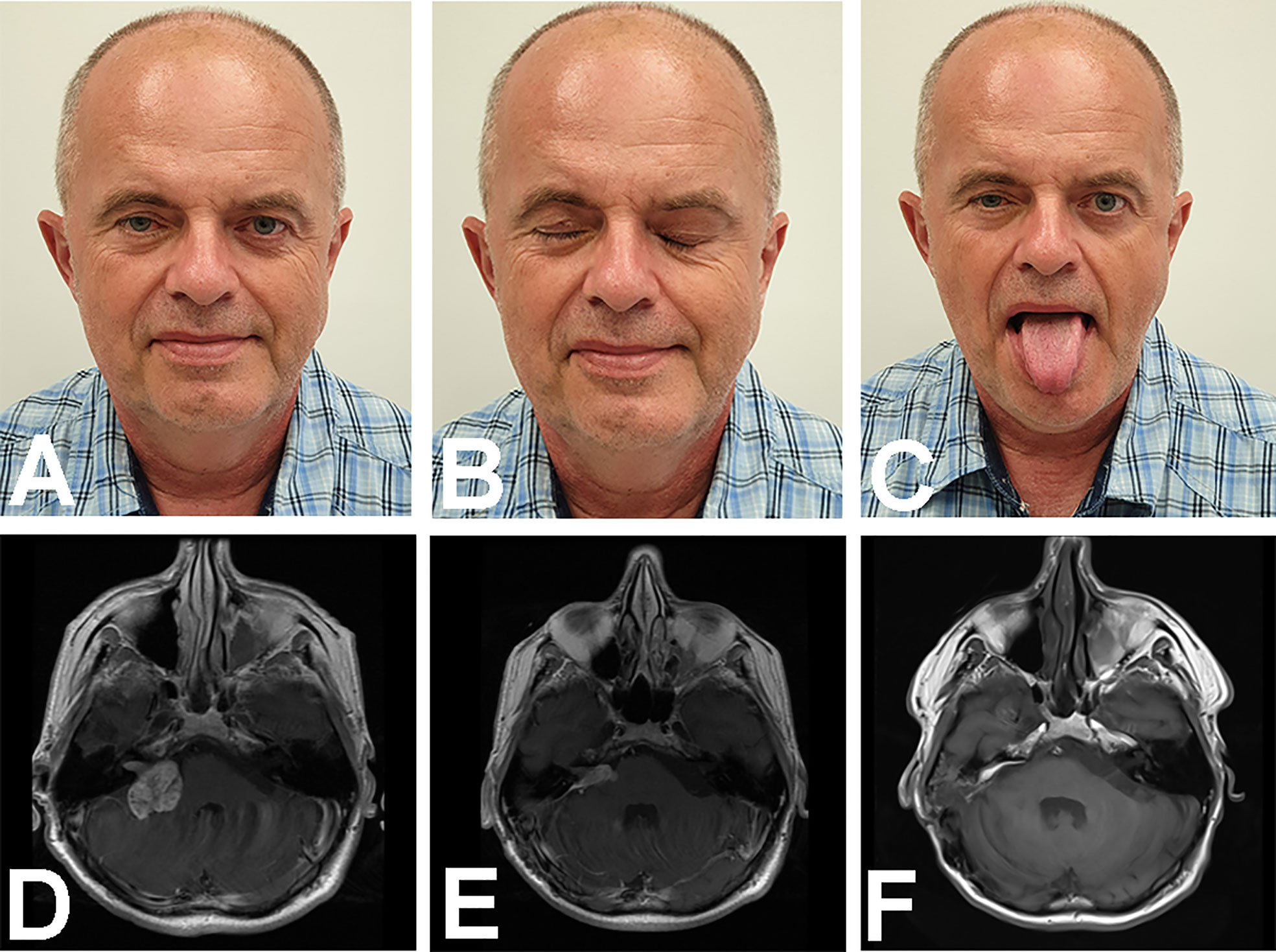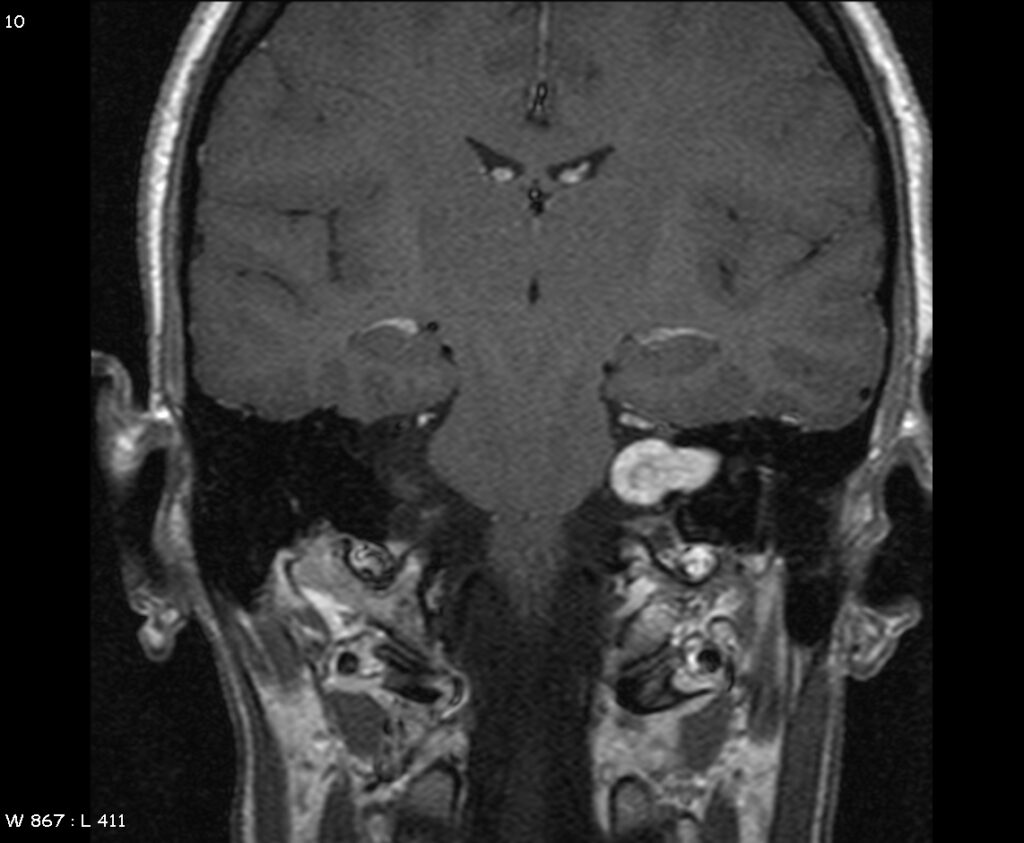An acoustic neuroma, also known as vestibular schwannoma, is a benign tumor that develops on the nerve responsible for transmitting balance and hearing information from the inner ear to the brain. This condition, while not cancerous, can lead to significant health challenges if left untreated. In this article, we will explore the details of this medical condition, including its symptoms, diagnostic methods, and available treatment options.

What is an Acoustic Neuroma?
An acoustic neuroma is a slow-growing, non-cancerous growth that arises from the protective sheath surrounding the eighth cranial nerve. This nerve plays a critical role in both hearing and maintaining balance. The tumor typically originates in the internal auditory canal, a narrow passageway that connects the inner ear to the brainstem. Over time, the growth can press against nearby structures, leading to various symptoms.
Although the exact cause of these tumors remains unknown, researchers believe that genetic mutations may play a role in their development. In some cases, acoustic neuromas are associated with a rare genetic disorder called neurofibromatosis type 2, which predisposes individuals to develop tumors in the nervous system.
Symptoms of Acoustic Neuroma
The symptoms of this condition often appear gradually and may vary depending on the size and location of the tumor. Early detection can be challenging because the initial signs are often subtle. Below are the most common symptoms:
- Hearing Loss: One of the hallmark symptoms is progressive hearing loss, usually affecting one ear. This hearing impairment tends to worsen over time and may be accompanied by a sensation of fullness in the affected ear.
- Tinnitus: A persistent ringing, buzzing, or hissing sound in the ear is another frequent symptom. Tinnitus can occur even before noticeable hearing loss sets in.
- Balance Issues: Individuals may experience dizziness, unsteadiness, or difficulty maintaining balance. These problems arise because the tumor interferes with the nerve responsible for balance.
- Facial Numbness or Weakness: As the tumor grows, it can compress nearby facial nerves, leading to numbness, tingling, or weakness on one side of the face.
- Headaches: Larger tumors may cause headaches, particularly if they exert pressure on the brainstem or cerebellum.
- Vision Problems: In advanced cases, patients may experience double vision or other visual disturbances due to increased intracranial pressure.
Diagnosing Acoustic Neuroma
Because the symptoms of this condition overlap with those of other ear-related disorders, diagnosing an acoustic neuroma requires a comprehensive evaluation. Healthcare providers use a combination of clinical assessments, imaging studies, and hearing tests to confirm the presence of the tumor.
Hearing Tests
Audiometry, or hearing tests, are often the first step in diagnosing this condition. During these tests, an audiologist evaluates the patient’s ability to hear different tones and frequencies. A characteristic pattern of unilateral hearing loss may raise suspicion of an acoustic neuroma.
Imaging Studies
Magnetic resonance imaging (MRI) is the gold standard for identifying and assessing the size of the tumor. This non-invasive test uses powerful magnets and radio waves to produce detailed images of the brain and inner ear structures. If MRI is not available or contraindicated, computed tomography (CT) scans may be used as an alternative.
Other Diagnostic Tools
In some cases, additional tests such as electronystagmography or brainstem auditory evoked response testing may be performed to evaluate balance function and nerve activity. These tools help healthcare providers gather more information about the extent of nerve damage caused by the tumor.
Treatment Options for Acoustic Neuroma
The treatment approach for this condition depends on several factors, including the size of the tumor, the severity of symptoms, and the patient’s overall health. Below are the primary treatment options available:
Observation and Monitoring
For small, asymptomatic tumors, doctors may recommend a “watchful waiting” approach. This involves regular monitoring through periodic imaging studies and hearing tests to track the tumor’s growth. Observation is often suitable for older adults or individuals with minimal symptoms, as these tumors tend to grow slowly.
Stereotactic Radiosurgery
Stereotactic radiosurgery is a non-invasive procedure that uses focused radiation beams to target and shrink the tumor. This method is particularly effective for small- to medium-sized tumors and is associated with fewer risks compared to traditional surgery. However, it may take months or even years for the tumor to fully respond to treatment.
Surgical Removal
In cases where the tumor is large, causing significant symptoms, or pressing on vital structures, surgical removal may be necessary. There are several surgical approaches, each designed to minimize damage to surrounding tissues:
- Translabyrinthine Approach: This method involves accessing the tumor through the inner ear. It is ideal for patients with significant hearing loss, as it sacrifices any remaining hearing in the affected ear.
- Retro-sigmoid Approach: This technique allows surgeons to remove the tumor while preserving hearing in some cases. It is often used for smaller tumors located near the brainstem.
- Middle Fossa Approach: This approach is reserved for very small tumors and focuses on preserving hearing and facial nerve function.
Rehabilitation and Supportive Care
Regardless of the treatment chosen, many patients require rehabilitation to address residual symptoms such as balance issues or facial weakness. Physical therapy, occupational therapy, and speech therapy can all play a crucial role in helping individuals regain functionality and improve their quality of life.
Living with Acoustic Neuroma
Managing this condition often involves adapting to changes in hearing, balance, and daily activities. Patients are encouraged to work closely with their healthcare team to monitor their progress and address any new symptoms promptly. Support groups and counseling can also provide emotional support and practical advice for coping with the challenges of living with this condition.
Future Directions in Research and Treatment
Ongoing research aims to better understand the underlying causes of this condition and develop more effective treatments. Advances in imaging technology, minimally invasive surgical techniques, and targeted therapies hold promise for improving outcomes for patients. Additionally, studies exploring the role of genetics in tumor development may pave the way for personalized treatment strategies in the future.





